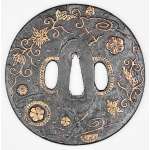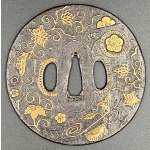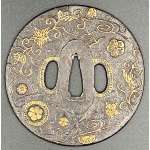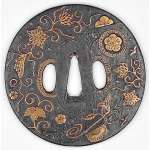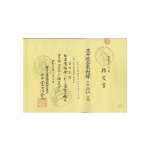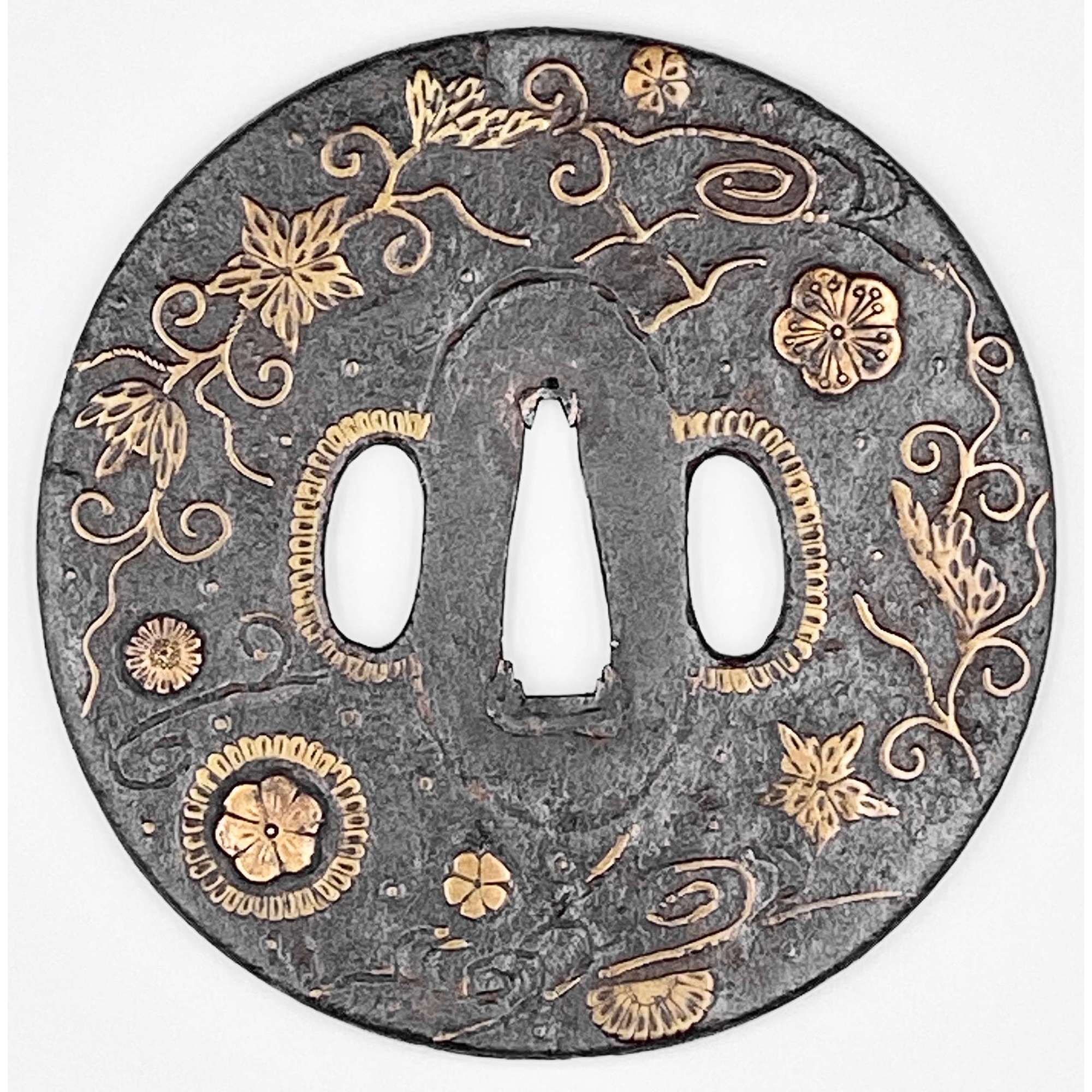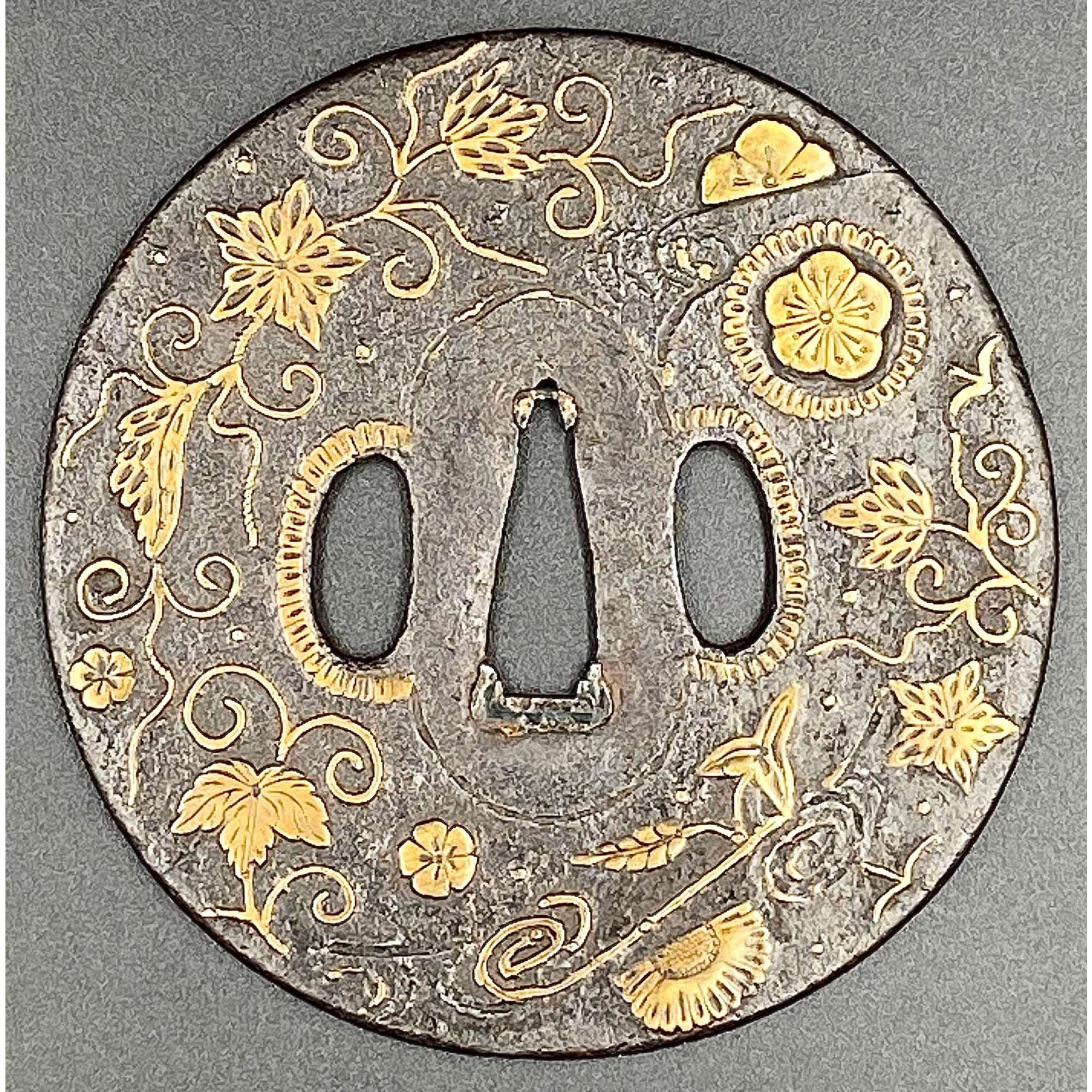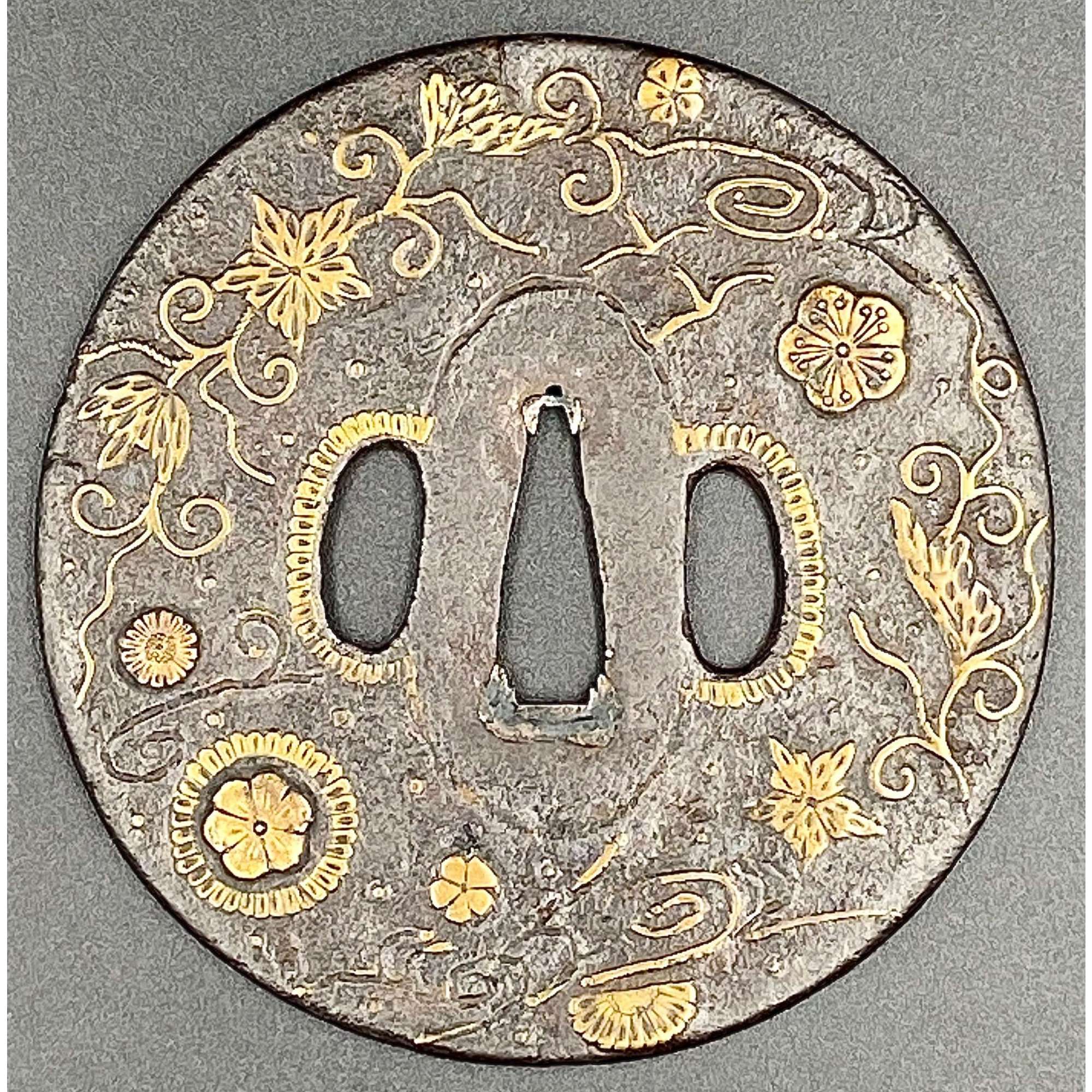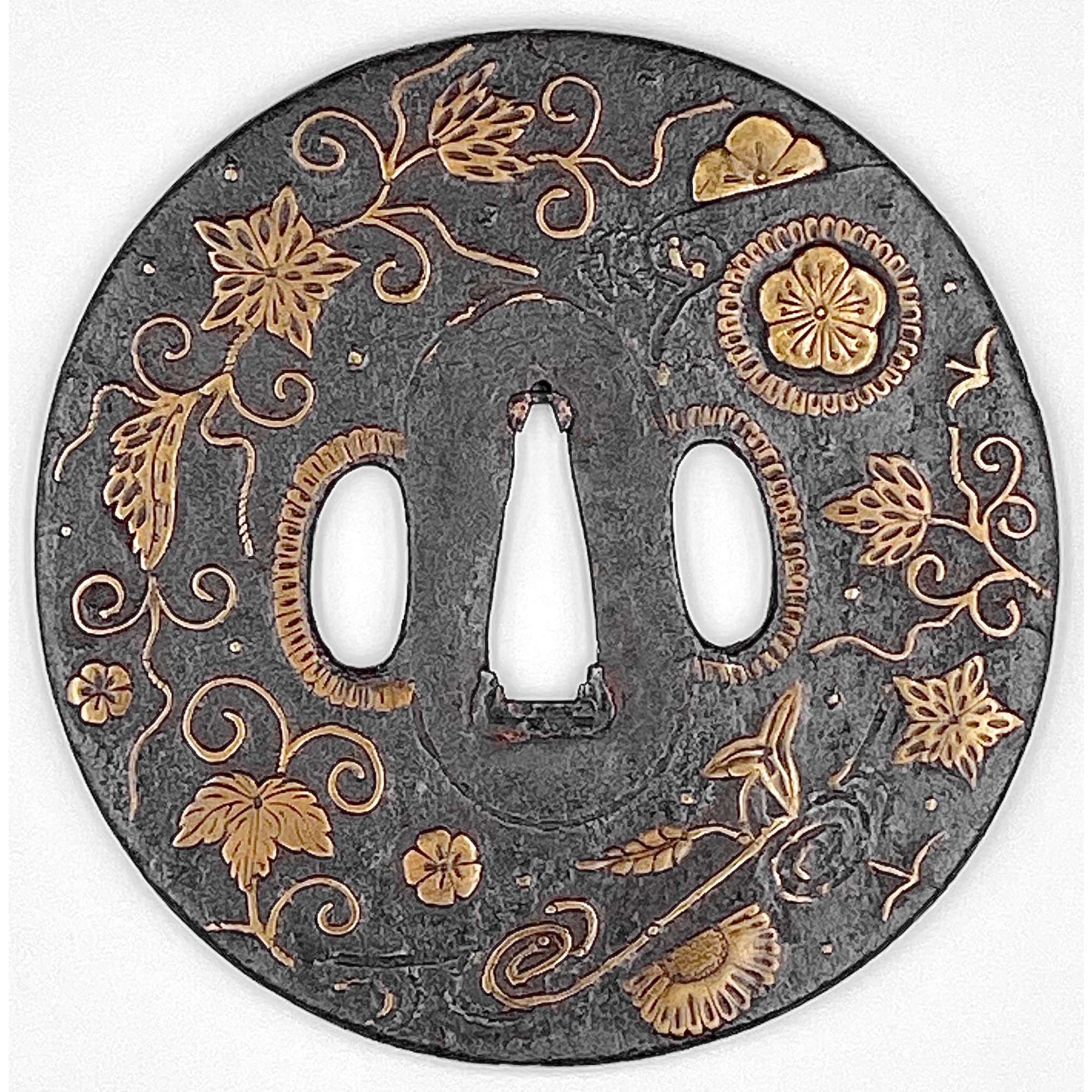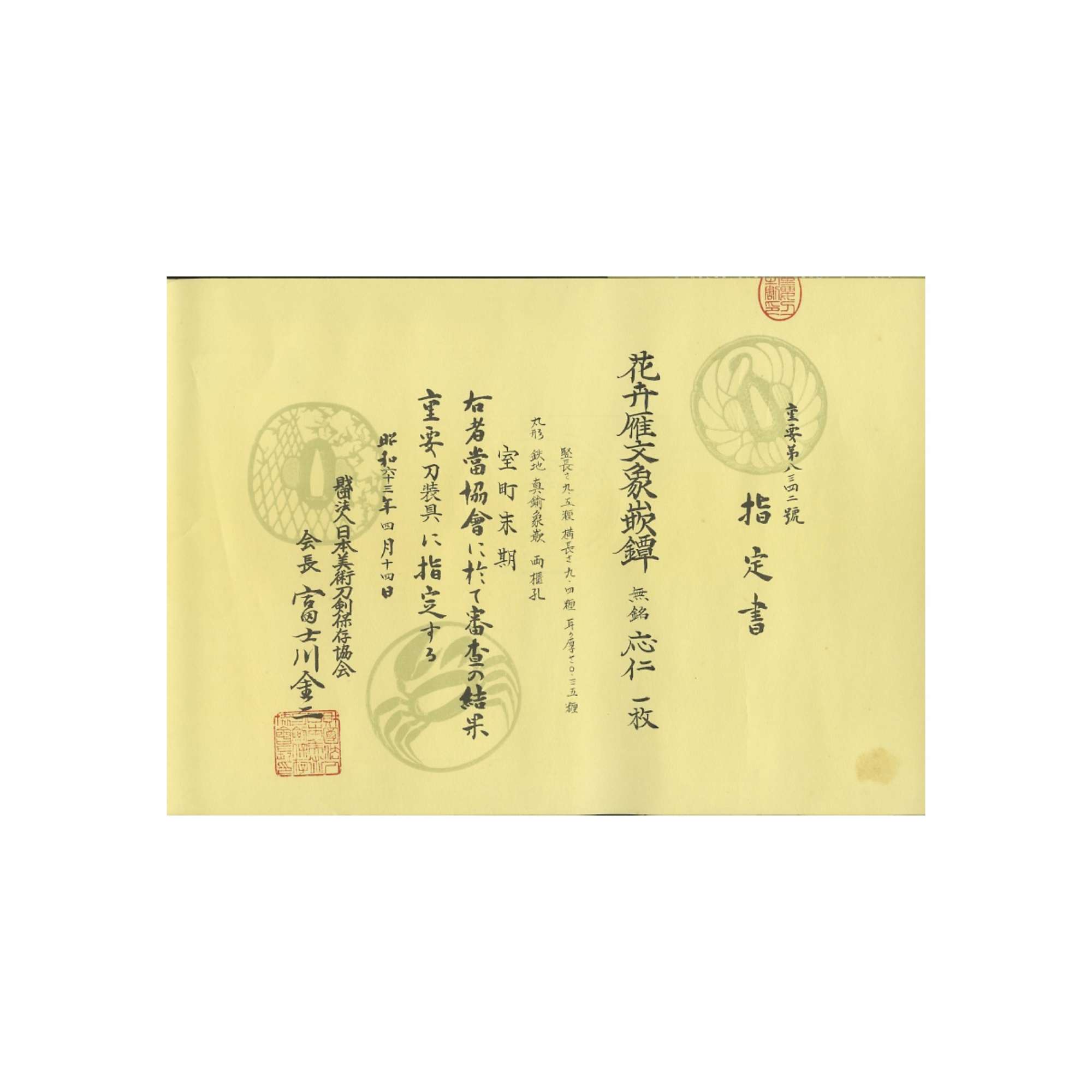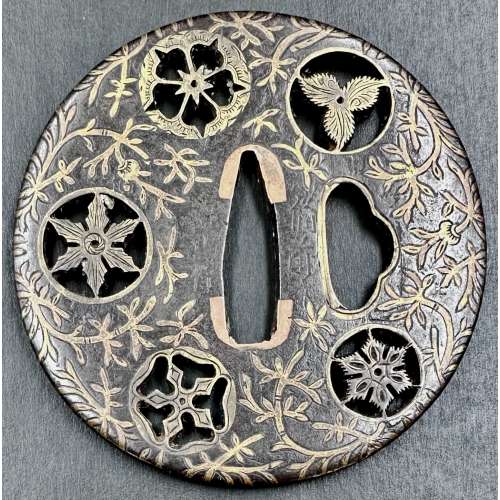Iron tsuba of round form adorned with the design of stars, wild geese, floating blossoms, leaves and tendrils realized in brass inlay. The inlay technique includes suemon-zōgan and ten-zōgan. Two smaller openings (hitsu-ana) surrounded by a scalloped brass border. The seppa-dai border inlay is missing, as well as a few other fragments of inlay on both sides. Sword cut at 12 o’clock on the reverse. A tsuba with a strong autumnal connotation, which once belonged to a great battle weapon. One of only three known jūyō Ōnin tsuba.
Translation of the paper, issued by the Japanese sword fittings (tosogu) examination board:
Designated as jūyō-tosogu at the 34th jūyō-shinsa held on April 14th 1988
Kaki-karimon zōgan-tsuba (花卉雁文象嵌鐔) — Tsuba with zōgan design of flowers and wild geese.
Mumei: Onin (応仁)
Tokyo. Nakasono Tokumi (中園とくみ)
Measurements: height 9.5 cm, width 9.4 cm, thickness at rim 0.35 cm
Interpretation: marugata, iron, brass zōgan, two hitsu-ana
Time: end of Muromachi
Explanation:
Ōnin-tsuba are thin iron ita-tsuba which show a brass zōgan ornamentation. All of them are mumei and there is the theory that they were made in the Onin era (1467-1469) although today more and more the theory is accepted that they are in general late Muromachi period works. There are two kinds of brass zōgan interpretations: One depicts irregularly arranged tachibana branches, wild geese, chrysanthemums, flowers, or karakusa for example, and the other one shows punctual zōgan elements, which are referred to as hoshi-zōgan or ro-zōgan, and concentrical zōgan elements between the nakago-ana and the rim. The latter interpretations might also be accompanied by simple ko-sukashi in the form of butterflies, clouds, hats, or stylized mountains.
This tsuba is a typical work from the former category. It is large and feels massive and the powerful and impressive zōgan and the excellent iron make it a highly tasteful piece.
Back side:
Issued to: Nakasono Tokumi
Address: Tokyo-to, Suginami-ku, Kamitakaido 2-17-26
Date of issue: May 30th 1989


